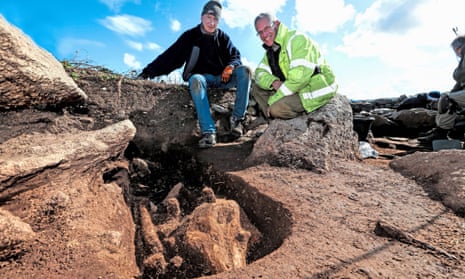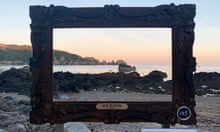Archaeologists digging at an island religious retreat have unearthed the remains of a porpoise that, mystifyingly, appears to have been carefully buried in its own medieval grave.
The team believe the marine animal found on the island of Chapelle Dom Hue, off the west coast of Guernsey, was buried in the 14th century.
When they first spotted the carefully cut plot they were convinced it was a grave and would hold human remains, but they were taken aback when they dug further and unearthed the skull and other body parts of a porpoise.
Quite why the porpoise was buried so carefully on the island, which is thought to have been used by monks seeking solitude, is a mystery.
Porpoises were eaten in medieval times but it would have been easier to dispose of the remains in the sea, which is only 10 metres from the site.
Philip de Jersey, a States of Guernsey archaeologist, said: “If they had eaten it or killed it for the blubber, why take the trouble to bury it? Some effort was made to create a neat hole.”
De Jersey said it was possible that a monk hid the body of the porpoise because he was not supposed to have it, or that the body was placed in the hole in salt to preserve it.
“It may have been packed in salt and then for some reason they didn’t come back to it.”
Another intriguing theory is that the animal had some sort of religious significance to the people who used the island. “The dolphin has a strong significance in Christianity but I’ve not come across anything like this before,” said De Jersey. “It’s the slightly wacky kind of thing that you might get in the iron age but not in medieval times.”
He said it was the most unusual find in his 35-year career. “It’s very peculiar, I don’t know what to make of it. Why go to the trouble of burying a porpoise in what looks like a grave. It’s a wonderful surprise.”
As well as the porpoise remains, shards of 14th-century pottery, a prehistoric stone tool and what is believed to be the remains of the walls of the monks’ retreat have been found.
The porpoise remains have been removed and will be studied by a marine expert.








